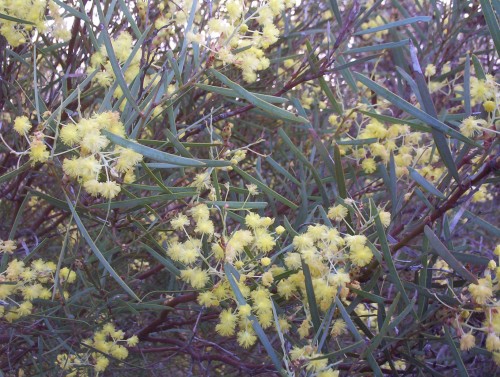Acacia pulchella (Western Prickly Moses)
A variable shrub, spreading, can be dwarfed or up tp 1.5m tall by 1-2 wide. Pulchella means beautiful, and to prolong its life, prune after flowering. In fact I have discovered that wattles can be pruned quite successfully and in some cases quite severely. This Acacia flowers in July until November.
It needs well drained light to heavy soil, dappled shade to full sun. Even though it is prickly, it can be used quite successfully to control human foot traffic, and animal access. This is another which can be propagated by seed or cuttings. Watch for new growth following pruning for cutting material. This Acacia is drought hardy and lime tolerant.
See here for growing from seed, and here for growing from cuttings.
Acacia lasiocarpa
Acacia lasiocarpa is a Western Australian species which was regarded as Acacia pulchella.
This is a variable shrub .5-2m x 1-3m, dense to open, or spreading. Some varieties have small spines. It has yellow globular flower heads at the ends of the branches. It grows in reasonably well drained light to heavy soil, in dappled shade or full sun. It is drought hardy and lime tolerant and is ornamental. This plant can be propagated by seed or from cuttings.
See here for information on taking cuttings.
See here for growing wattles from seed.
Acacia iteaphylla (Flinders Range Wattle)
This is one of my favourite wattles. I’ve had a hedge of them for over 20 years, and here they are the first to flower, beginning in Autumn. I noticed another hedge of them in the town in good bloom. This uaually means that there hasn’t been much rain here because the blooms spoil in the rain.
Well grown plants reach 3-5m tall by 3-6m wide. They have pale yellow sprays of flowers and can be pruned. It is very adaptable and is drought resistant and lime tolerant. Some forms have pretty new growth, and can be pendulous or upright in growth habit. Use as an ornamental or low windbreak as well as a hedge.
